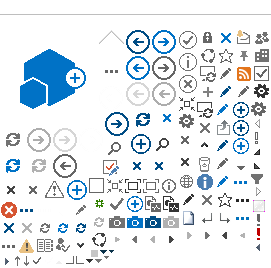The Do-Nothing Endorsement
The CG 22 92 purports to extend completed operations coverage to snow plow operations via exception to the ISO CGL “auto” exclusion g. The premise of the need for the CG 22 92 is that the CGL generally excludes the “use” of autos, whether ongoing or completed operations. Couple that with the completed operations exclusion BAP, and you have a serious coverage gap for auto completed operations that slips between the CGL and BAP cracks. Assuming, of course, that this is the proper interpretation.
This issue was presented to ISO not long ago by the Mid-America Technical Conference and the Big “I” national technical affairs committee. The consensus opinion was that the CGL “auto” exclusion applies to ongoing auto operations, not BI or PD that arises from a completed operation, whether involving a pile of snow deposited by a snow plow or a pile of gravel deposited by a grader or frontend loader.
Note that there is no ISO endorsement for completed operations for anything other than snow plowing and, under the CG 22 66, the mis-delivery of fluids such as heating oil. Why would only two very specific activities be afforded completed operations coverage by the CGL, leaving all other types of auto completed ops excluded with no way to cover them?
The belief of the Big “I” Virtual University is that it has never been the intent of the CGL policy to exclude BI or PD arising from a completed operation involving a snow plow, dump truck, delivery vehicle, cherry picker or any other auto that has completed operations and left the premises. This position seems to be supported by the CG 00 37—Products/Completed Operations Liability Coverage Form which contains no auto exclusion. The logical conclusion is that there is no auto exclusion in this form because the intent is for general liability coverage to extend to auto completed operations.
Read the full article and discuss this issue with your carriers
here.
Why Do I Need a Personal Umbrella Policy?
Perhaps the best bargain in insurance is an umbrella policy. However, convincing your customers of the need and value of an umbrella policy is another matter. The Big “I” Virtual University faculty often provides examples of claims often covered by umbrellas (but not the underlying policies) and gives scenarios where an umbrella may be of greater value than one might realize at first glance.
For example, many apartment dwellers have no homeowners insurance and are unaware of the importance and value of the liability section of the HO-4 tenants form. Considering that many tenants live in 6–12 unit apartment buildings, a million dollar umbrella might come in handy if the tenant’s negligence results in the building burning down, as all too often happens.
To learn more about the need for umbrella coverage, examples you can use to market the coverage and for links to some excellent articles and umbrella comparison charts,
click here.
Does BYOB Need Liquor Liability?
Some private clubs allow patrons to bring their own liquor, perhaps providing set-ups. Some restaurants permit customers to bring their own wine for a corking fee. Some spas provide complimentary wine. An amusement center allows liquor in private party rooms. A caterer serves alcohol provided by a client. Do these businesses need liquor liability coverage?
The ISO CGL policy excludes BI and PD arising from activities of insureds who are “in the business of manufacturing, distributing, selling, serving or furnishing alcoholic beverages.” In this article, the VU faculty cites specific examples of BYOB establishments inadvertently served alcohol, including one state Supreme Court case.
Click here to learn how to better advise your clients about the dangers of going bare on liquor liability coverage.
Bill Wilson (
bill.wilson@iiaba.net)
is director of the Big “I” Virtual University, an online learning center for agents and brokers. Do you have coverage questions? To pose a question to the VU volunteer faculty, log in to the Virtual University at
www.independentagent.com/VU and click on the “Experts” link near the top of the page. 